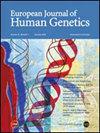机器学习预测肌萎缩性侧索硬化症的不同生物类型。
IF 4.6
2区 生物学
Q2 BIOCHEMISTRY & MOLECULAR BIOLOGY
引用次数: 0
摘要
肌萎缩性侧索硬化症(ALS)是一种普遍致命且无法治愈的神经退行性疾病。临床表现、发病和病理机制的异质性是开发有效的ALS治疗方法具有挑战性的关键原因。在这里,我们分析了来自两个死后队列的数据:一个是来自297名ALS患者的大量转录组,另一个是来自23名ALS患者的单细胞转录组。使用无监督机器学习,我们发现三组ALS患者的特征是突触功能障碍(34%),神经元再生(47%)和神经元变性(19%)。每种ALS亚型都有独特的转录失调模式,可能代表新的治疗靶点。然后,我们开发了一个有监督的机器学习模型,根据患者人口统计和临床数据预测ALS亚型的准确率约为80%。我们共同建立了三种生物学上不同的ALS亚型,可以通过临床和人口统计学数据来预测。本文章由计算机程序翻译,如有差异,请以英文原文为准。

Machine learning predicts distinct biotypes of amyotrophic lateral sclerosis
Amyotrophic lateral sclerosis (ALS) is a neurodegenerative disease that is universally fatal and has no cure. Heterogeneity of clinical presentation, disease onset, and proposed pathological mechanisms are key reasons why developing impactful therapies for ALS has been challenging. Here we analyzed data from two postmortem cohorts: one with bulk transcriptomes from 297 ALS patients and a separate cohort of single cell transcriptomes from 23 ALS patients. Using unsupervised machine learning, we found three groups of ALS patients characterized by synaptic dysfunction (34%), neuronal regeneration (47%), and neuronal degeneration (19%). Each of these ALS subtypes had unique patterns of transcriptional dysregulation that could represent novel therapeutic targets. We then developed a supervised machine learning model that was about 80% accurate at predicting ALS subtype based on patient demographic and clinical data. Together, we established three biologically distinct subtypes of ALS that can be predicted by clinical and demographic data.
求助全文
通过发布文献求助,成功后即可免费获取论文全文。
去求助
来源期刊

European Journal of Human Genetics
生物-生化与分子生物学
CiteScore
9.90
自引率
5.80%
发文量
216
审稿时长
2 months
期刊介绍:
The European Journal of Human Genetics is the official journal of the European Society of Human Genetics, publishing high-quality, original research papers, short reports and reviews in the rapidly expanding field of human genetics and genomics. It covers molecular, clinical and cytogenetics, interfacing between advanced biomedical research and the clinician, and bridging the great diversity of facilities, resources and viewpoints in the genetics community.
Key areas include:
-Monogenic and multifactorial disorders
-Development and malformation
-Hereditary cancer
-Medical Genomics
-Gene mapping and functional studies
-Genotype-phenotype correlations
-Genetic variation and genome diversity
-Statistical and computational genetics
-Bioinformatics
-Advances in diagnostics
-Therapy and prevention
-Animal models
-Genetic services
-Community genetics
 求助内容:
求助内容: 应助结果提醒方式:
应助结果提醒方式:


